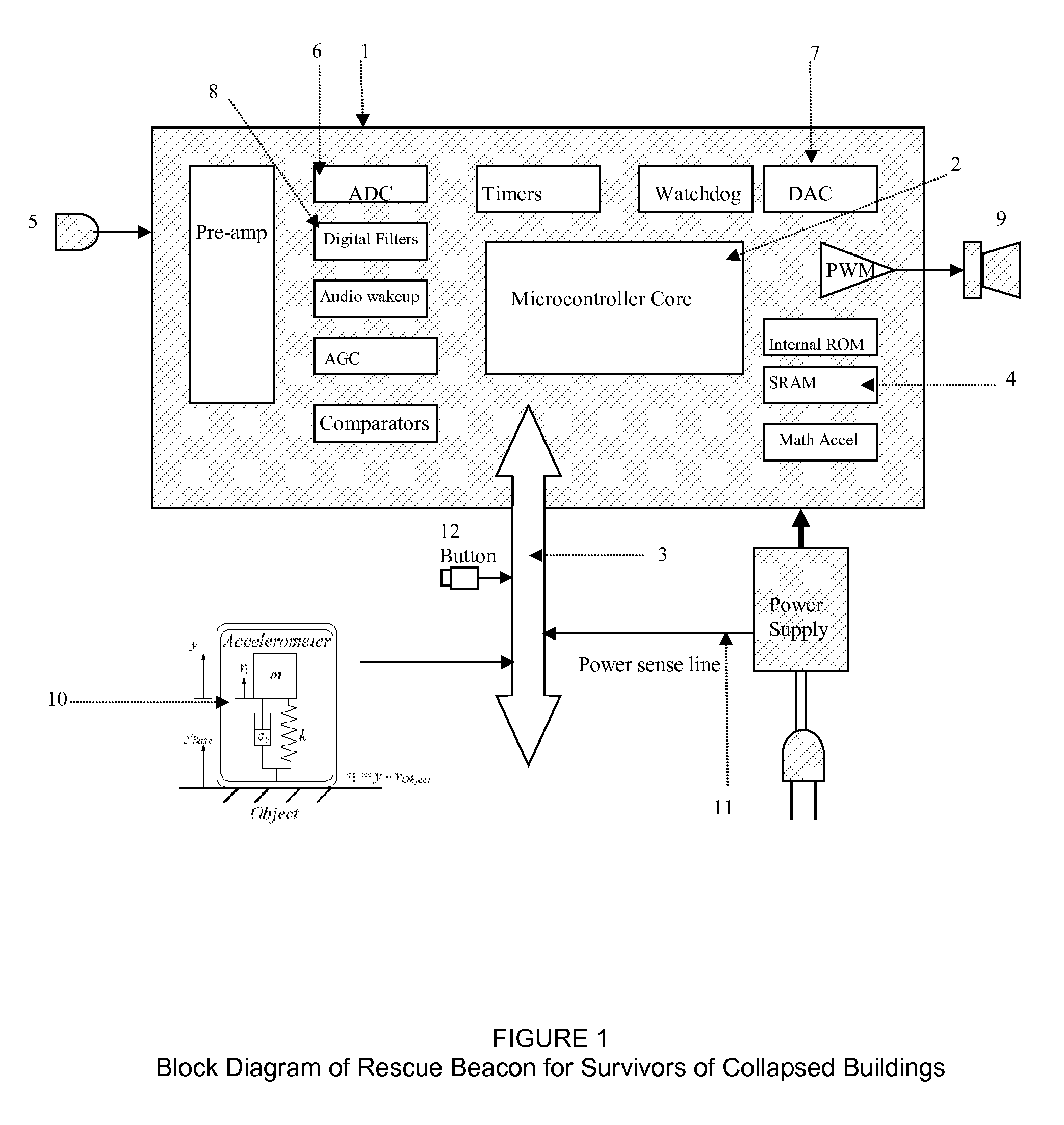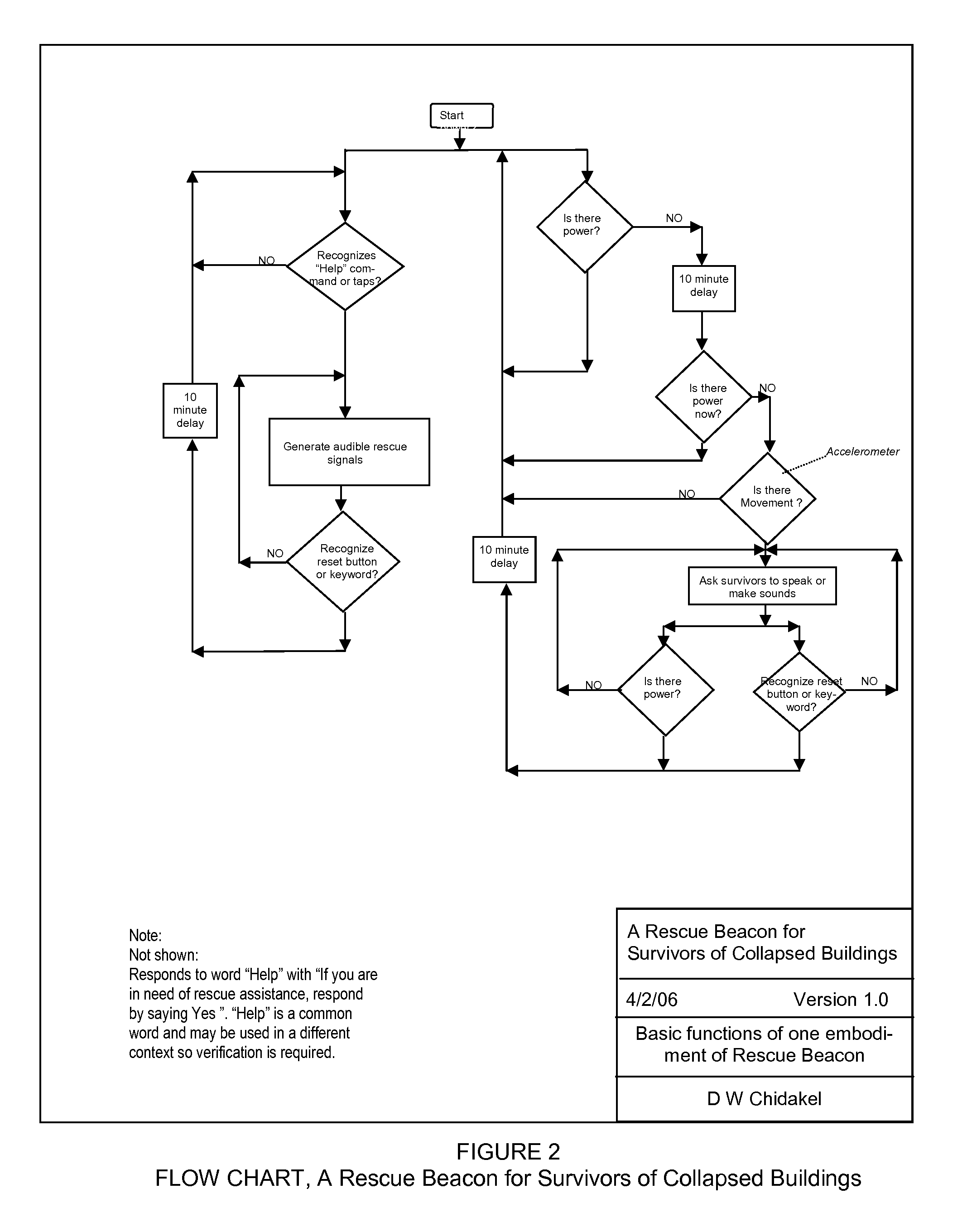Versatile Network of Building Alarm Modules
a technology of building alarm modules and network antennas, which is applied in the direction of fire alarms, smoke/gas actuation, fire alarms, etc., can solve the problems of affecting the safety of people, and haphazard use of radios, etc., so as to reduce the need for redundant antennas and electronics, and be easy to install
- Summary
- Abstract
- Description
- Claims
- Application Information
AI Technical Summary
Benefits of technology
Problems solved by technology
Method used
Image
Examples
Embodiment Construction
[0028]The present invention comprises a radio receiver alarm module 1 containing a microprocessor and associated electronics 2. Said radio receiver alarm module is connected to at least one hazardous condition detector such as a smoke detector. Said radio receiver alarm module is capable of receiving hazard alerts encoded onto a radio signal such as those from the National Oceanic and Atmospheric Administration and may, additionally, be capable of receiving other types of radio or satellite broadcasts. The radio receiver alarm module, itself, is preferably, and in this example, attached to the wall at a convenient height and wired into, or otherwise connected to, the building's electrical supply. Said radio receiver alarm module is, as well, connected to other alarm devices such as smoke detectors or carbon monoxide detectors which alarm devices are, themselves, interconnected.
[0029]Each connected alarm module responds to data bits received from other interconnected alarm modules by...
PUM
 Login to View More
Login to View More Abstract
Description
Claims
Application Information
 Login to View More
Login to View More - R&D
- Intellectual Property
- Life Sciences
- Materials
- Tech Scout
- Unparalleled Data Quality
- Higher Quality Content
- 60% Fewer Hallucinations
Browse by: Latest US Patents, China's latest patents, Technical Efficacy Thesaurus, Application Domain, Technology Topic, Popular Technical Reports.
© 2025 PatSnap. All rights reserved.Legal|Privacy policy|Modern Slavery Act Transparency Statement|Sitemap|About US| Contact US: help@patsnap.com



